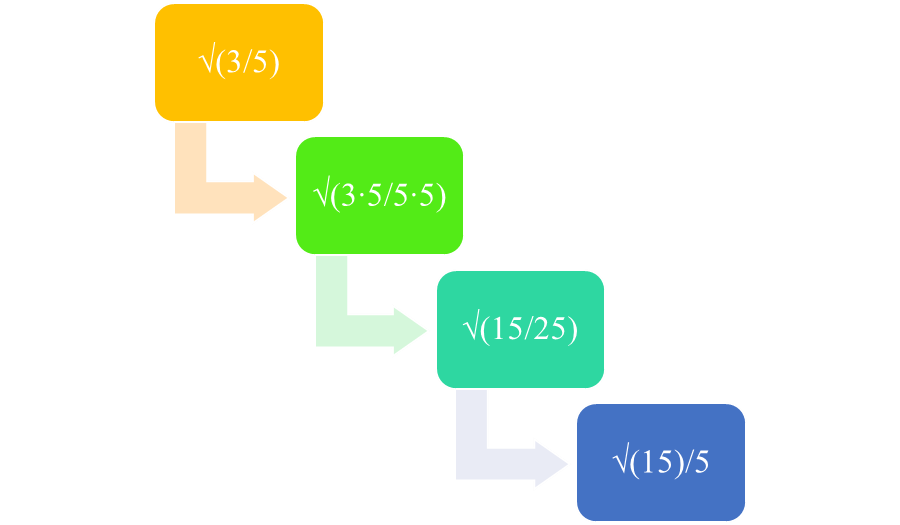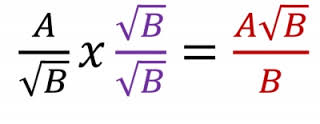Overview
In order to divide rational expressions accurately, special rules for radical expressions can be followed. Some of those rules include the quotient rule, rules for finding the square roots of quotients, and rationalizing the denominator.
The Quotient Rule
Suppose the problem is to evaluate the square root of 36/49. The problem can be written in two different ways, either √ (36)/√ (49) or √ (36/49). The square root of 36/49 solved with the first method is √ (36)/√ (49) or 6/7. The square root of 36/49 solved with the second method is √ (36/49) or 6/7. This leads to the Quotient Rule, that for any non-negative number A and any positive number B, the quotient of two square roots is the same whether the square root is taken from the entire ratio or the square root is taken of the numerator and the denominator separately.
Figure 1: The Quotient Rule in Symbol Form
Square Roots of Quotients
This rule is commutative, so that it means the same whether the square roots are taken together in a ratio or taken separately. Sometimes it is easier to solve the problem if the square roots of the numerator and the denominator are considered separately. That way, they can be simplified using perfect square roots if they are available. Suppose the problem is to find the square root of 18/50. Neither 18 nor 50 are perfect squares, but the ratio 18/50 can be multiplied by 2/2, to give 36/100. The square root of 36 is 6 and the square root of 100 is 10, to result in a fraction of 6/10, which can be further simplified to 3/5. Alternatively, 18 could be factored as 2 times 9 and 50 as 2 times 25, so the ratio could be divided by 2/2 to be further simplified as 3/5.
Rationalizing the Denominator under the Radical Sign
One of the ways to move a radical out of the denominator is to multiply the number by a form of 1, so that the denominator becomes a perfect square. Suppose the expression is √ (3/5). While the entire fraction is still under the radical sign, multiply each number by 5/5 so that the new fraction is 15/25 or √ (15)/5.
Figure 2: The process of rationalizing the denominator under the radical sign.
Rationalizing the Denominator outside the Radical Sign
The other way to move a radical out of the denominator is to multiply both the numerator and the denominator for a form of 1 using radicals. Suppose that the ratio is 5/√ (3). In order to move the radical out of the denominator, both the numerator and the denominator can be multiplied by a form of 1 with the radical expression √3/√3 to result in (5√3)/3.
Figure 3: Rationalizing the denominator by using radicals, in symbol form.
Interested in algebra tutoring services? Learn more about how we are assisting thousands of students each academic year.
SchoolTutoring Academy is the premier educational services company for K-12 and college students. We offer tutoring programs for students in K-12, AP classes, and college. To learn more about how we help parents and students in Exeter, NH: visit Tutoring in Exeter, NH




